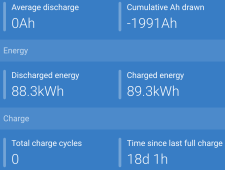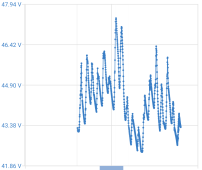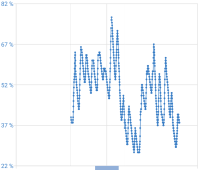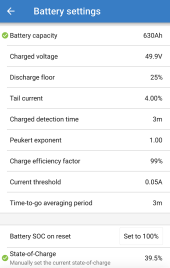I have 6x 2014 Tesla Model S battery modules in 2S3P config for 43.2V 630Ah configuration at roughly 85% state of health. They are charged by Victron MPPT 150/60 controller maxing out at 60A. I had Victron smart shunt logging battery data for 18 days and the result shows 98.9 % charge/discharge energy efficiency. Typical charge rate is 0.05 C and discharge rate 0.025 C or 20 hour charge and 40 hour discharge on average.

Here is 18 days of voltage logging. Note that energy count was captured at exactly same 43.31 Volts and about the same load current of 5A or 0.008 C rate for the pack.

Charge level estimate drifted down by 2% overtime. Still tweaking capacity and efficiency setting to minimize SOC drift.

.

Here is 18 days of voltage logging. Note that energy count was captured at exactly same 43.31 Volts and about the same load current of 5A or 0.008 C rate for the pack.

Charge level estimate drifted down by 2% overtime. Still tweaking capacity and efficiency setting to minimize SOC drift.

.



